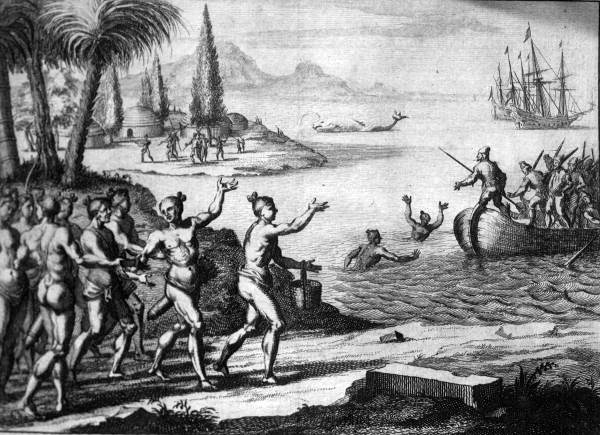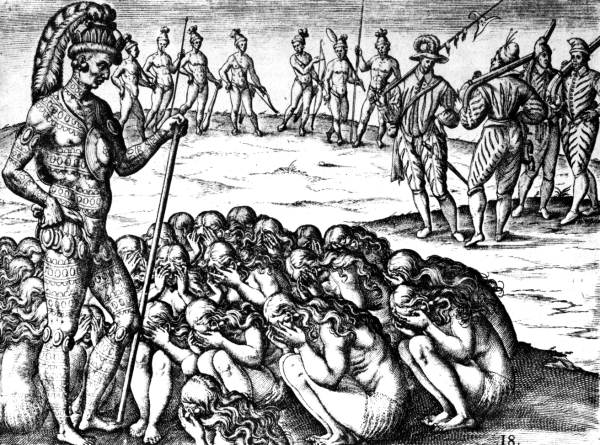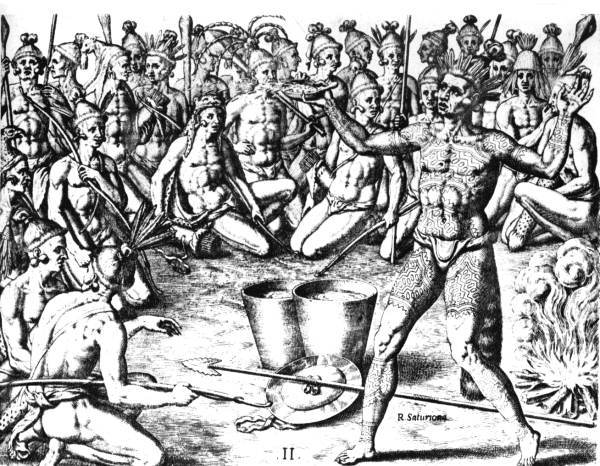Description of previous item
Description of next item
Jacques Le Moyne de Morgues and Theodor de Bry's Images of Florida Indians
Published May 5, 2012 by Florida Memory
Artist and cartographer Jacques Le Moyne de Morgues (1533-1588) accompanied René de Laudonnière (ca. 1529-1574) to Florida in 1564. Laudonnière hoped to established a French settlement in the vicinity of the River May (St. Johns River), first explored by Jean Ribault (1520-1565) in April 1562. By June of 1564, the French had constructed Fort Caroline near the mouth of the St. Johns River.
In September 1565, Spanish soldiers led by Pedro Menéndez de Avilés (1519-1574) attacked the French. Le Moyne, charged with illustrating French progress, lost most of his work during the siege.
Following the rout of the French by the Spaniards, Le Moyne returned to Europe where he reproduced sketches of Florida from memory. In 1591, the Flemish engraver Theodor de Bry (1528-1598) published 42 engravings based on Le Moyne’s work.
De Bry’s renditions of Le Moyne’s sketches are both historically significant and highly controversial. Scholars contend that Le Moyne included features that do not match later depictions of the local Timucua Indians, and also that de Bry may have altered many of the images prior to publication. Artistic license is evident in several of the images included here. For example, in the above scene depicting the Timucua greeting the French, mountains are visible in what is supposed to be northeastern Florida.
Other elements provide clues into Timucuan culture. The Chief in the image above (“Grieving widows approach the Chief” ) is adorned with numerous tattoos. Because Europeans were largely unfamiliar with tattooing for decorative purposes, it appears unlikely that either Le Moyne or de Bry fabricated Timucuan body art. Later ethnographic information gathered by Europeans supports the notion that tattooing was quite common among the southeastern Indians.
Regardless of their authenticity, the images created by Le Moyne and published by de Bry constitute the earliest known visual representations of Florida and its indigenous people. Although the illustrations provide only a small window into the lives of the Timucua, they reveal a wealth of information about the goals and aspirations of the French and their efforts to promote the colonization of Florida.
Images such as “Chief Saturiba goes to war,” above, were meant to promote French colonization. This particular image conveyed the notion that the Timucua obeyed authority, were organized and fit for war, and could perhaps aid the French against their Spanish foes. The images depicted the Timucua as less sophisticated than Europeans, both in terms of dress and weaponry, and therefore they were potential candidates for accepting French religion and civilization.
Cite This Article
Chicago Manual of Style
(17th Edition)Florida Memory. "Jacques Le Moyne de Morgues and Theodor de Bry's Images of Florida Indians." Floridiana, 2012. https://www.floridamemory.com/items/show/252637.
MLA
(9th Edition)Florida Memory. "Jacques Le Moyne de Morgues and Theodor de Bry's Images of Florida Indians." Floridiana, 2012, https://www.floridamemory.com/items/show/252637. Accessed February 26, 2025.
APA
(7th Edition)Florida Memory. (2012, May 5). Jacques Le Moyne de Morgues and Theodor de Bry's Images of Florida Indians. Floridiana. Retrieved from https://www.floridamemory.com/items/show/252637

 Listen: The Folk Program
Listen: The Folk Program



